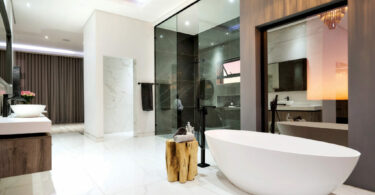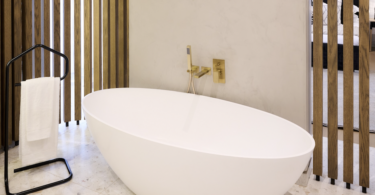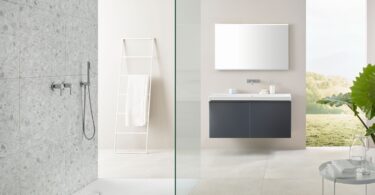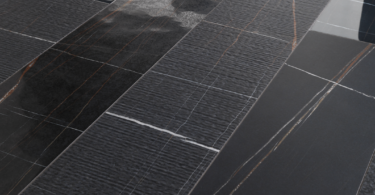How hard can it be, right? Well, there’s actually quite a few things to consider, so read on…
Location, location – Where will the basin go and who will use it? Is it destined for the guest loo, the master en-suite or a family bathroom? Lifestyle and traffic are important factors, as a basin in a master bathroom will need to be large enough for two people to use (or you’ll need two matching basins here), while the one in the guest loo really only needs to be big enough to allow for hand washing. A stylish and more delicate basin probably won’t work in a family bathroom, where you’ll need something more robust that’s deep and wide enough to help keep splashing and spills to a minimum. Also, what will sit above the basin, as a glass one for instance could be damaged by something falling out of an overhead cabinet or from a shelf that’s above it.
Size matters – How much bathroom space do you have available for the basin and how much storage and counter space do you need under and/or on either side of it for toiletries and such? This will all influence the style of basin you choose. Also, the size of your basin should be in line with the scale of the rest of your bathroom fixtures and fittings.
Style guide – Just like a beautiful bath, a basin can help set the tone for the entire bathroom, and there are a myriad styles, shapes and materials to choose from nowadays. Basin styles include wall-mounted, semi-recessed, drop-ins, stand-alone pedestals (or pillar basins), above-counter vessels/bowls, all-in-one basins and countertops, and more. Every style comes with its own pros and cons, so do your homework here before you commit. Basin shapes range from your standard round, square or rectangular, to oval, pebble, cubed, leaf, pointed, scalloped, scooped, trough, Zen, etc, etc.
As for materials, you can choose from the ever-popular porcelain and ceramic basins to glass, stone, copper, brass, concrete and even chrome. Just remember that what the basin is made out of is important from a style and décor point of view but also from a usability, durability and ease-of-maintenance perspective too.
More hints and tips
• If you’d like a coloured basin, first consider the colour of the other fixtures in your bathroom. Will they match or clash? Also, for countertop basins, think about the look you want to create between the colour of the countertop and the colour of the basin. Do you want them to contrast or blend with each other?
• When choosing taps to go with your basin, make sure that they will clear the height of the basin to make it comfortable to use, and that they will fit the style you’ve chosen (the basin may have holes for taps or have no holes at all if the taps are to be wall-mounted). Also, don’t choose a small tap for a big basin or vice versa. When it comes to free-standing vessels and bowls that sit on top of the counter, they’ll require either wall-mounted taps or taller taps than usual (if they’re too low and sit behind the vessel, they’ll be difficult to reach).
• Tempered glass is the best type for a bathroom basin as it is more resistant to cracking or shattering.
• Stone basins usually require sealing to protect the surface from staining. Also remember that different stones react differently to various substances. Some bathroom cleaners may not be compatible with stone (or metal, for that matter).
• A wall-mounted basin works well in a small bathroom, as there aren’t any cabinets below it, which saves on space and also leaves more visible floor area, making the room seem bigger.
• Concrete basins are usually heavier than other types, depending on their size and shape, so they’ll need sufficient counter support.
• Consider all the costs, including plumbing and installation, before choosing a basin.











Leave a Comment